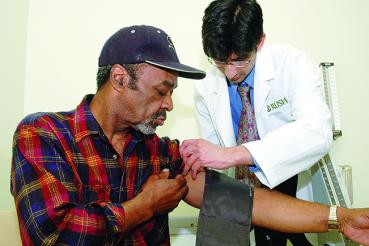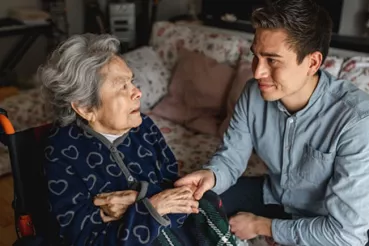Visiting friends, attending parties and going to church may help keep your brain healthy, according to research conducted at Rush.
The study, posted online in Alzheimer's & Dementia: The Journal of the Alzheimer's Association, shows that frequent social activity may help to prevent or delay dementia in old age.
“This study is a follow up on previous papers from our group showing that social activity is related to less cognitive decline in older adults,” said Bryan James, PhD, associate professor of internal medicine at Rush.
“In this study, we show that social activity is associated with a decreased risk of developing dementia and mild cognitive impairment, and that the least socially active older adults developed dementia an average of five years before the most socially active.”
Social activity can strengthen neural circuits in the brain, making them more resistant to the buildup of pathology that occurs with age. Social behavior activates the same areas of the brain involved in thinking and memory.
Authors note that the findings highlight the value of social activity as a possible community-level intervention for reducing dementia.
The findings suggest that more frequent social activity points to a 38% reduction in dementia risk and a 21% reduction in mild cognitive impairment risk, compared to the least socially active.
In addition, a five-year delay in dementia onset has been estimated to yield an additional three years of life and an economic benefit of reducing dementia costs by 40% in the next 30 years, potentially $500,000 in lifetime health care savings for each person who would eventually develop dementia.
The study included 1,923 dementia-free older adults with a mean age of about 80 who are participating in the Rush Memory and Aging Project, an ongoing longitudinal study of common chronic conditions of aging.
A total of 545 participants developed dementia, and 695 developed mild cognitive impairment. They each underwent yearly evaluations that included a medical history and neuropsychological tests.
Social activity was measured based on a questionnaire that asked participants whether, and how often, in the previous year they had engaged in six common social activities that involve social interaction — for example, whether they went to restaurants or sporting events, played bingo, took day or overnight trips, did volunteer work or visited relatives or friends.
Cognitive function was assessed using 21 tests for various types of memory as well as perceptual speed and visuospatial ability.
At the start of the investigation, all participants were free of any signs of cognitive impairment. Over an average of five years, however, those who were more socially active showed reduced rates of dementia. Other variables that might have accounted for the increase in cognitive decline — such as age, physical exercise and health — were all adjusted for in the analysis.
Why social activity plays a role in the development of cognitive problems is not clear. One possibility is that “social activity challenges older adults to participate in complex interpersonal exchanges, which could promote or maintain efficient neural networks in a case of ‘use it or lose it,’” James said.
Future research is needed to determine whether interventions aimed at increasing late-life social activity can play a part in delaying or preventing cognitive decline, James said.
Other researchers at Rush involved in the study were Yi Chen, PhD, Francine Grodstein, ScD, Ana Capuano, PhD, Tianhao Wang, PhD, and David Bennett, MD.




